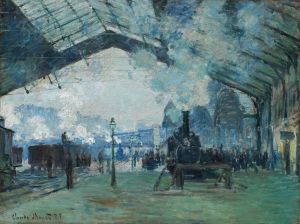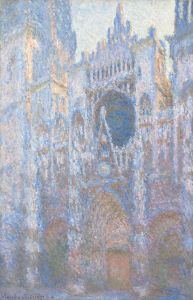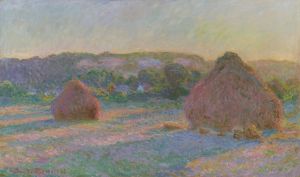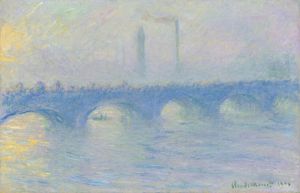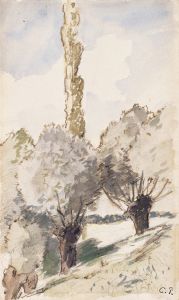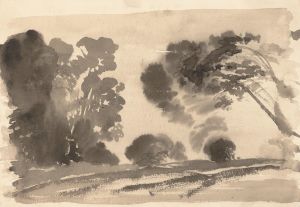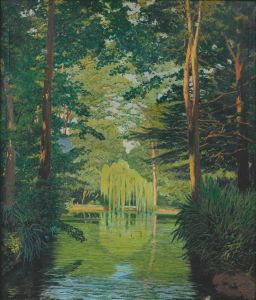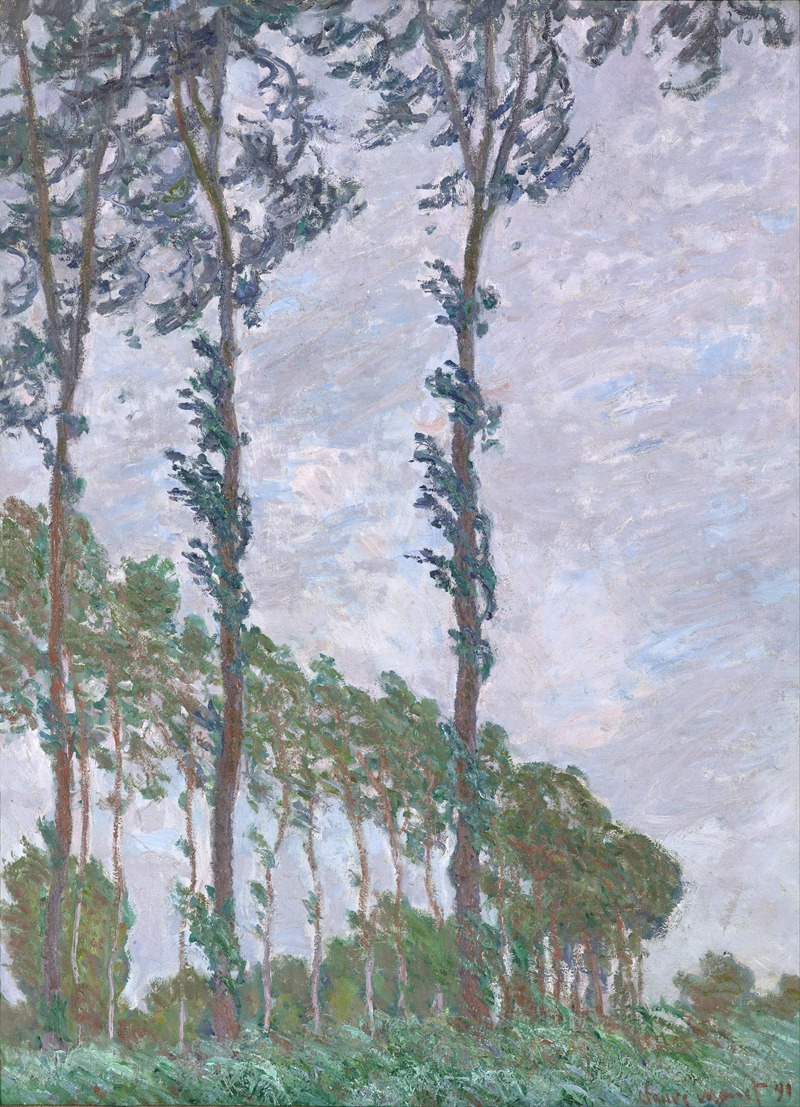
Wind Effect, Series of The Poplars
A hand-painted replica of Claude Monet’s masterpiece Wind Effect, Series of The Poplars, meticulously crafted by professional artists to capture the true essence of the original. Each piece is created with museum-quality canvas and rare mineral pigments, carefully painted by experienced artists with delicate brushstrokes and rich, layered colors to perfectly recreate the texture of the original artwork. Unlike machine-printed reproductions, this hand-painted version brings the painting to life, infused with the artist’s emotions and skill in every stroke. Whether for personal collection or home decoration, it instantly elevates the artistic atmosphere of any space.
Claude Monet, a founding figure of the Impressionist movement, is renowned for his series paintings that capture the same subject under varying conditions of light and atmosphere. One of his notable series is "The Poplars," which includes the painting "Wind Effect, Series of The Poplars." This series was created in 1891 and is celebrated for its exploration of light, color, and the transient effects of weather on the landscape.
Monet's "The Poplars" series was inspired by a row of poplar trees along the Epte River near his home in Giverny, France. These trees were a prominent feature in the landscape and provided a dynamic subject for Monet's explorations of natural light and seasonal changes. The series consists of several paintings, each depicting the poplars at different times of the day, under various weather conditions, and during different seasons.
"Wind Effect, Series of The Poplars" specifically captures the trees swaying in the wind, showcasing Monet's ability to convey movement and the ephemeral nature of the scene. The painting is characterized by its vibrant colors and the fluid, dynamic brushstrokes that are hallmarks of Monet's style. The use of light and shadow in the painting creates a sense of depth and movement, drawing the viewer into the natural rhythm of the landscape.
Monet often worked on multiple canvases simultaneously, moving from one to another as the light and weather changed. This method allowed him to capture the fleeting effects of light and atmosphere with great immediacy and authenticity. The "Poplars" series, including "Wind Effect," exemplifies this approach, as each painting offers a unique perspective on the same subject, highlighting the variations in light and color that occur throughout the day and across different weather conditions.
The creation of the "Poplars" series was not without its challenges. At one point, the trees were scheduled to be cut down, which would have disrupted Monet's work. To prevent this, Monet arranged to purchase the trees, ensuring that he could continue his series without interruption. This anecdote underscores Monet's dedication to his art and his determination to capture the natural beauty of the landscape.
"Wind Effect, Series of The Poplars" is part of the larger body of work that solidified Monet's reputation as a master of Impressionism. The series was well-received by critics and collectors alike, and it played a significant role in the development of landscape painting in the late 19th and early 20th centuries. Monet's innovative techniques and his focus on the effects of light and atmosphere influenced many subsequent artists and continue to be studied and admired today.
In summary, "Wind Effect, Series of The Poplars" by Claude Monet is a quintessential example of the artist's ability to capture the transient beauty of nature. Through his use of color, light, and dynamic brushwork, Monet brings to life the movement and vitality of the poplar trees swaying in the wind, offering viewers a glimpse into the ever-changing landscape that inspired his work.





